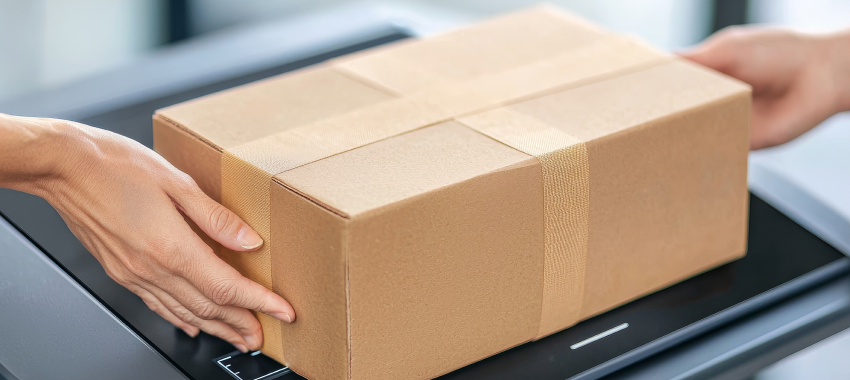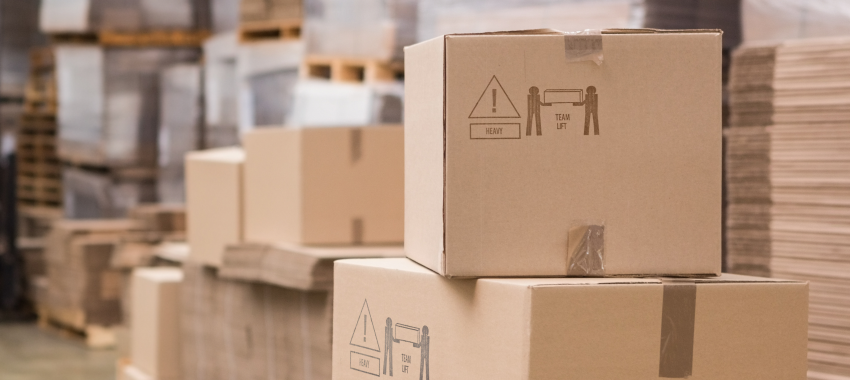How to Reduce Shipping Costs: 10 Tips for Businesses
February 21, 2025

Whether you’re an ecommerce company trying to compete with retail giants or a small business owner trying to keep up with rising rates, shipping costs can eat into profitability. But, they’re an essential part of staying competitive in today’s market. While fluctuating rates and other surprises may make shipping expenses feel like an unsolvable puzzle, we’re here to show you a better way. Here are our top 10 tips for how to reduce shipping costs without impacting customer satisfaction.
- Reduce Package Size
- Use Lightweight Packing Materials
- Create Custom Packaging
- Apply Dimensional Weight to Product
- Split Larger Orders into Multiple Shipments
- Lower the DIM Weight
- Get Discounted Shipping Rates
- Use Poly Mailers
- Use Corrugated Boxes
- Use Flat Rate Shipping
1. Reduce Package Size
Start by looking at your package’s dimensions. Most shipping rates are based on both the size and weight of the package being shipped, as well as its destination. If your package contains a lot of empty space, you’re probably paying more than you need to ship it. Instead, opt for the smallest size packaging that will fit your product. This will help to reduce the cost of shipping while also reducing your overall packaging costs. In some cases, smaller packaging also offers better protection. So, if you’re looking for cheaper shipping options, think small.
2. Use Lightweight Packing Materials
How much does your packaging weigh? While you may not be able to reduce the weight of the product inside, you can lighten the load by making smart packaging material choices. To reduce the overall shipping weight, choose lightweight materials whenever possible.
For example, a padded envelope is lighter than a cardboard box. Corrugated boxes, which have air-filled grooves between each layer, are stronger and lighter than regular cardboard. If your product is fragile or delicate and requires internal protection, bubble wrap, air pillows, and foam inserts weigh next to nothing.

3. Create Custom Packaging
Extraneous packaging materials, from a too-big box to a too-bulky inner, can drive up shipping costs. To avoid paying for excess weight and size, consider creating a custom packaging solution for your product. This is an especially good idea for items that are bulky, oddly-shaped, or otherwise have unique packaging requirements.
A just-right-sized package not only serves to lower shipping costs by reducing size and weight, a custom fit can also offer better protection, preventing breakage and costly returns. And with the right partner, a custom solution can increase efficiency to help you better manage upfront costs. Don’t rule out custom packaging, even if you’re looking for small business shipping options.
4. Apply Dimensional Weight to Product
In addition to physical weight, the cost of shipping for small business and commercial shipping is determined by a package’s dimensional weight, aka DIM weight. This number refers to the amount of space a package occupies relative to its size. Shipping rates are usually charged based on whichever is greater, DIM weight or actual weight, so knowing the DIM weight can help you optimize costs.
To calculate DIM weight, first find the volume of your package by multiplying its length x width x height. Then, divide that number by 139, which is the current “dim divisor” that’s used industry-wide. For example, if you’re shipping a box that’s 12” x 6” x 6”, the dim weight is 3.1 (432 ÷ 139 = 3.1). If the package weighs less than 3.1 lbs, the freight will be determined by its DIM weight. However, if it weighs more than 3.1 lbs, the physical weight will set the rate.
5. Split Larger Orders into Multiple Shipments
Large packages = hefty freight fees. Unlock cheaper shipping options by splitting larger orders into smaller shipments that distribute the weight across multiple packages. Be sure to calculate your shipping costs to make sure the packages are small enough to save you money.
6. Lower the DIM Weight
Reducing the amount of space your packaging takes up relative to its weight can help you lower shipping costs. Use the DIM weight formula provided above to calculate the optimal size packaging for your product . Generally speaking, opting for the smallest viable packaging solution will help to lower the DIM weight.

7. Get Discounted Shipping Rates
With so many carriers on the market today, it’s worth shopping around to find the best rates. In addition to the power players like UPS, FedEx, DHL and USPS, you can check out smaller freight companies, too—especially if you’re shipping for small business. Depending on where you ship, local carriers may offer discounted rates or other small business shipping options that support the local economy. Striking a deal to do more volume with one company, or even to use them exclusively, might also help you land a lower rate, so don’t be afraid to negotiate.
8. Use Poly Mailers
Replacing traditional cardboard boxes with poly mailers can also help to reduce shipping costs by reducing package weight. Poly mailers are strong, lightweight, and affordable, making them an optimal option for shipping many products. Plus, they come in a variety of sizes, ensuring you can find the perfect fit for your needs.
9. Use Corrugated Boxes
Another smart way to lighten packaging weight is by replacing traditional heavy cardboard with corrugated boxes, which weigh less while still providing adequate strength protection. If you’re unsure about the strength of corrugate, check out our longstanding Cardboard Chaos series where we put it to the test in all kinds of fun and exciting ways.
10. Use Flat Rate Shipping
If you’re looking for cheaper shipping options, consider flat rate packages, which can help you save on shipping heavier items. For example, FedEx offers flat rate, two-day shipping anywhere in the US for packages that weigh 50 lbs or less. The USPS offers multiple flat rate options, including Priority Mail flat rate envelopes and boxes, which come in varying sizes and rates. To take advantage of the simplicity and predictability of flat rate shipping, be sure to check out all the available options so you can find the one that best suits your needs — and your budget.
How Ernest Can Help You Reduce Your Shipping Costs
If you’re looking to save on shipping costs, Ernest’s team of experts is ready to help. Whether you’re shipping for small business or on a large scale, we can help you land on the best possible packaging solution to minimize the size, weight, and cost of getting your product from A to B. That might mean designing a custom solution, exploring new small business shipping options or changing to a different off-the-shelf option than what you’re currently using. With locations around the country, we have the connections and the know-how to optimize your operation and minimize your costs. Let’s talk about what we can do for your business.
Packaging Design







